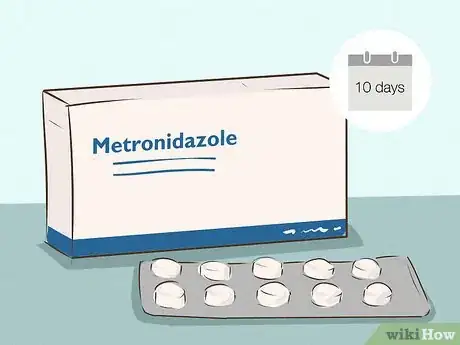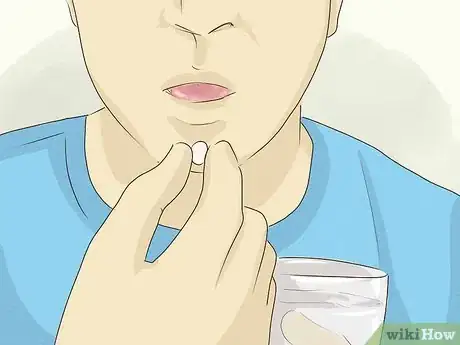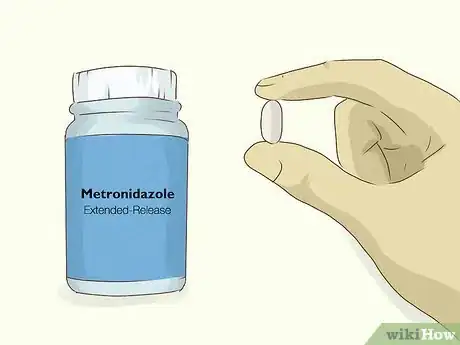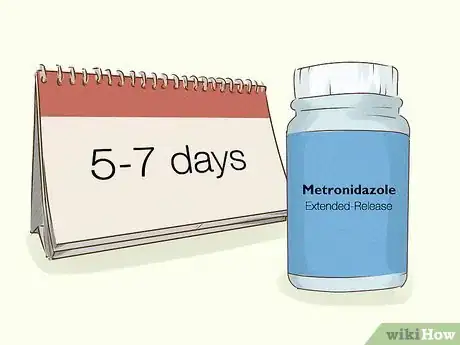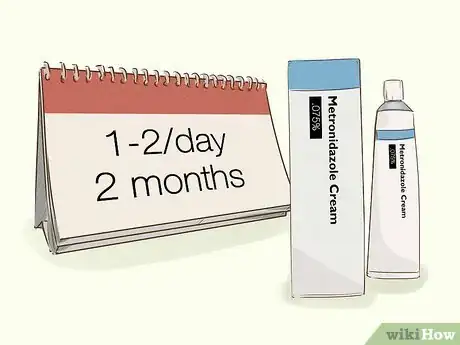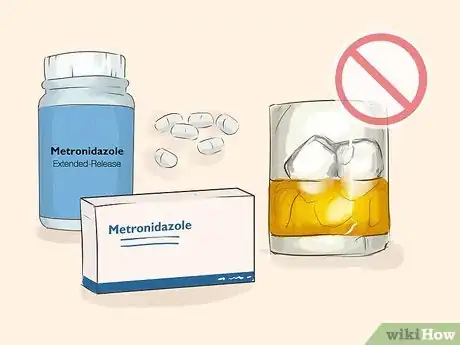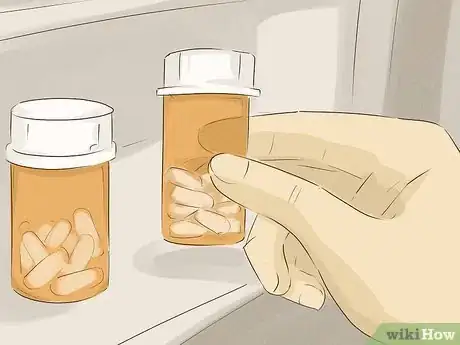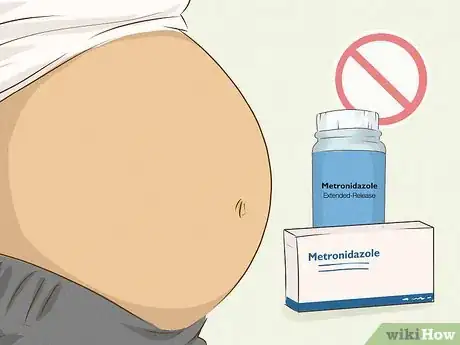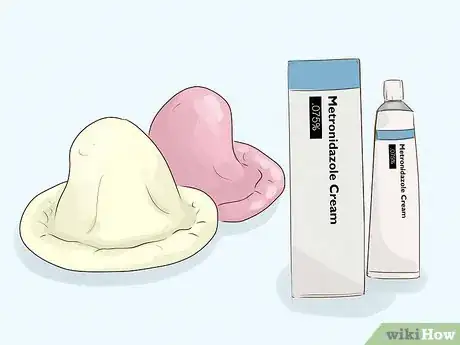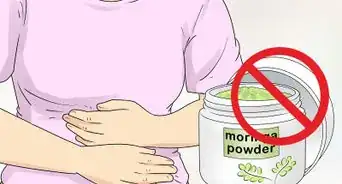This article was medically reviewed by Robert Dhir, MD. Dr. Robert Dhir is a board certified Urologist, Urological Surgeon, and the Founder of HTX Urology in Houston, Texas. With over 10 years of experience, Dr. Dhir’s expertise includes minimally-invasive treatments for enlarged prostate (UroLift), kidney stone disease, surgical management of urological cancers, and men’s health (erectile dysfunction, low testosterone, and infertility). His practice has been named a Center of Excellence for the UroLift procedure, and is a pioneer in non-surgical procedures for ED using his patented Wave Therapy. He earned his undergraduate and medical degrees from Georgetown University and was awarded honors in pre-medical studies, urology, orthopedics, and ophthalmology. Dr. Dhir served as chief resident during his urological surgical residency at University of Texas at Houston / MD Anderson Cancer Center in addition to completing his internship in general surgery. Dr. Dhir was voted Top Doctor in Urology for 2018 to 2019, one of the top three Best Rated Urologists in 2019 & 2020 for Houston Texas, and Texas Monthly has named him to the 2019 & 2020 Texas Super Doctors Rising Stars list.
There are 7 references cited in this article, which can be found at the bottom of the page.
This article has been viewed 9,650 times.
Your doctor may prescribe metronidazole for bacterial or parasitic infections, including trichomoniasis (trich), bacterial vaginosis (BV), or rosacea. If you are suffering from any of these conditions, talk to your doctor about the risks and benefits of metronidazole first. While it is usually highly effective, metronidazole can also cause unpleasant side effects. Finally, you should not take metronidazole if you are pregnant, have liver problems, or believe that you will be unable to stop drinking alcohol for the course of the treatment.
Steps
Using Metronidazole Capsules
-
1Use metronidazole capsules for up to 10 days. A doctor will prescribe metronidazole capsules to treat amebiasis, bacterial infections, or trichomoniasis. They work by stopping the bacteria from growing and multiplying. Don't take any more or less than you are prescribed. If you miss a dose, take it as soon as you remember unless it is time for your next dose. Do not take a double dose.[1]
-
2Take one dose 1-3 times a day. For trichomoniasis, you may only have to take one dose a day. For other infections, expect to take 3 doses a day, 6 hours apart.[4]
- Your doctor will tell you exactly how many doses you will need to take in a day.
Advertisement -
3Eat a snack with metronidazole if your stomach gets upset. Keep well-hydrated by drinking lots of water with every dose. Take the medication with a meal or a snack to prevent stomachaches.[5]
- Check food labels and don't eat anything with propylene glycol, an additive that can interact with metronidazole and cause unpleasant side effects like vomiting.
Taking Extended-Release Metronidazole
-
1Use extended-release metronidazole to treat bacterial vaginosis (BV). A doctor can prescribe long-acting tablets that you take once a day. Metronidazole can treat BV but not yeast infections. Make sure that your infection is bacterial before starting metronidazole.[6]
-
2Take extended-release metronidazole for 5-7 days, once a day. The maximum treatment is usually 7 days. Make sure you finish the entire treatment, even if you start feeling better part of the way through. This could cause the infection to come back worse.[7]
- Talk to your doctor if you are still experiencing symptoms after 7 days. Symptoms include gray, white, green, or fishy-smelling discharge, as well as vaginal itching or burning during urination.
- Don't crush the extended-release tablets. Swallow them whole.
-
3Eat 2 hours before taking extended-release metronidazole, or 1 hour after. Do not take food with extended-release metronidazole, if possible. This can cause side effects like nausea.[8]
Using Metronidazole Cream
-
1Use metronidazole cream to treat rosacea, skin infections, or infected wounds. This prescription-only antibacterial cream is an external treatment. This treatment doesn't usually have any side effects, but ask a doctor how to use it best.[9]
- Sometimes, metronidazole gel is also prescribed for internal vaginal use.
-
2Apply the cream once or twice a day for 2 months, as directed. The usual course of treatment is about 2 months long. Be sure to keep using the cream for the whole treatment, even if symptoms seem to clear up.[10]
- For internal vaginal use, the treatment is usually 5 days long.
-
3Put a thin layer of cream over the infected area. Gently rub the cream into the infected area. Using too much cream is unlikely to cause harm, but may mean that you run out before the treatment is over. Wash your hands when you are done to avoid getting cream in your mouth or eyes.[11]
- Avoid getting the cream in your eyes. This can be painful.
- For vaginal treatment, fill the applicator and insert the medication into your vagina according to the instructions that come with the medicine.
Avoiding Risks while Taking Metronidazole
-
1Avoid drinking alcohol while on metronidazole. Combining alcohol with metronidazole can cause vomiting, nausea, cramps, and headaches. Don't drink alcohol until 3 days after you have completed your treatment.[12]
- Also avoid recreational drugs while on metronidazole, as not enough studies have been completed to understand the side effects.
-
2Tell your doctor about all other medications you are taking. Metronidazole interacts with lots of other medications and can cause side effects from mild irritation to serious health complications. Your doctor may suggest temporarily adjusting or stopping taking other medications while on metronidazole.[13]
- Include prescription and over-the-counter medicines, vitamins, and herbal treatments you take in your discussion with your doctor.
-
3Avoid taking metronidazole if you are pregnant. Some antibiotics cannot be taken during pregnancy.[14] Metronidazole can cause harm to unborn babies. If you are pregnant, ask for an alternative treatment.[15]
- Tell your doctor right away if you think you became pregnant while taking metronidazole.
- Don't breastfeed within 24 hours of taking metronidazole.
-
4Use condoms during sex if you are taking metronidazole to treat an STI. If you are taking metronidazole for trichomoniasis ("trich"), use a condom to prevent the infection from spreading to your partner. You can also use other barrier methods, such as interior condoms, or abstain from sex while taking metronidazole.[16]
- Your doctor may also recommend treating your partner at the same time, even if they don't show symptoms of trich.
-
5Talk to your doctor if you experience any serious side effects. Serious side effects can include nausea, dizziness, seizures, weakness, and unusual mood changes. If you experience any of these side effects, you may need medical attention or an alternative treatment.[17]
- Common side effects include lightheadedness, heartburn, cramps, and trouble sleeping. You don't need to tell your doctor about any of these unless they interfere with your day-to-day functioning.
Expert Q&A
-
QuestionWhat are the symptoms of UTI?
 Robert Dhir, MDDr. Robert Dhir is a board certified Urologist, Urological Surgeon, and the Founder of HTX Urology in Houston, Texas. With over 10 years of experience, Dr. Dhir’s expertise includes minimally-invasive treatments for enlarged prostate (UroLift), kidney stone disease, surgical management of urological cancers, and men’s health (erectile dysfunction, low testosterone, and infertility). His practice has been named a Center of Excellence for the UroLift procedure, and is a pioneer in non-surgical procedures for ED using his patented Wave Therapy. He earned his undergraduate and medical degrees from Georgetown University and was awarded honors in pre-medical studies, urology, orthopedics, and ophthalmology. Dr. Dhir served as chief resident during his urological surgical residency at University of Texas at Houston / MD Anderson Cancer Center in addition to completing his internship in general surgery. Dr. Dhir was voted Top Doctor in Urology for 2018 to 2019, one of the top three Best Rated Urologists in 2019 & 2020 for Houston Texas, and Texas Monthly has named him to the 2019 & 2020 Texas Super Doctors Rising Stars list.
Robert Dhir, MDDr. Robert Dhir is a board certified Urologist, Urological Surgeon, and the Founder of HTX Urology in Houston, Texas. With over 10 years of experience, Dr. Dhir’s expertise includes minimally-invasive treatments for enlarged prostate (UroLift), kidney stone disease, surgical management of urological cancers, and men’s health (erectile dysfunction, low testosterone, and infertility). His practice has been named a Center of Excellence for the UroLift procedure, and is a pioneer in non-surgical procedures for ED using his patented Wave Therapy. He earned his undergraduate and medical degrees from Georgetown University and was awarded honors in pre-medical studies, urology, orthopedics, and ophthalmology. Dr. Dhir served as chief resident during his urological surgical residency at University of Texas at Houston / MD Anderson Cancer Center in addition to completing his internship in general surgery. Dr. Dhir was voted Top Doctor in Urology for 2018 to 2019, one of the top three Best Rated Urologists in 2019 & 2020 for Houston Texas, and Texas Monthly has named him to the 2019 & 2020 Texas Super Doctors Rising Stars list.
Board Certified Urologist & Urological Surgeon Symptoms of UTI include burning with urination, urinary frequency and urgency, and pain over the lower back or the pubic bone.
Symptoms of UTI include burning with urination, urinary frequency and urgency, and pain over the lower back or the pubic bone. -
QuestionHow do you prevent UTIs in women?
 Robert Dhir, MDDr. Robert Dhir is a board certified Urologist, Urological Surgeon, and the Founder of HTX Urology in Houston, Texas. With over 10 years of experience, Dr. Dhir’s expertise includes minimally-invasive treatments for enlarged prostate (UroLift), kidney stone disease, surgical management of urological cancers, and men’s health (erectile dysfunction, low testosterone, and infertility). His practice has been named a Center of Excellence for the UroLift procedure, and is a pioneer in non-surgical procedures for ED using his patented Wave Therapy. He earned his undergraduate and medical degrees from Georgetown University and was awarded honors in pre-medical studies, urology, orthopedics, and ophthalmology. Dr. Dhir served as chief resident during his urological surgical residency at University of Texas at Houston / MD Anderson Cancer Center in addition to completing his internship in general surgery. Dr. Dhir was voted Top Doctor in Urology for 2018 to 2019, one of the top three Best Rated Urologists in 2019 & 2020 for Houston Texas, and Texas Monthly has named him to the 2019 & 2020 Texas Super Doctors Rising Stars list.
Robert Dhir, MDDr. Robert Dhir is a board certified Urologist, Urological Surgeon, and the Founder of HTX Urology in Houston, Texas. With over 10 years of experience, Dr. Dhir’s expertise includes minimally-invasive treatments for enlarged prostate (UroLift), kidney stone disease, surgical management of urological cancers, and men’s health (erectile dysfunction, low testosterone, and infertility). His practice has been named a Center of Excellence for the UroLift procedure, and is a pioneer in non-surgical procedures for ED using his patented Wave Therapy. He earned his undergraduate and medical degrees from Georgetown University and was awarded honors in pre-medical studies, urology, orthopedics, and ophthalmology. Dr. Dhir served as chief resident during his urological surgical residency at University of Texas at Houston / MD Anderson Cancer Center in addition to completing his internship in general surgery. Dr. Dhir was voted Top Doctor in Urology for 2018 to 2019, one of the top three Best Rated Urologists in 2019 & 2020 for Houston Texas, and Texas Monthly has named him to the 2019 & 2020 Texas Super Doctors Rising Stars list.
Board Certified Urologist & Urological Surgeon Women can take Proanthocyanidin supplementation and use vaginal estrogen creams to prevent UTIs. They should also completely empty their bladder.
Women can take Proanthocyanidin supplementation and use vaginal estrogen creams to prevent UTIs. They should also completely empty their bladder. -
QuestionDoes bio-metronidazole 400 treat a UTI?
 Danielle Jacks, MDDanielle Jacks, MD is a Surgical Resident at Ochsner Clinic Foundation in New Orleans, Louisiana. She has over six years of experience in general surgery. She received her MD from Oregon Health and Science University in 2016.
Danielle Jacks, MDDanielle Jacks, MD is a Surgical Resident at Ochsner Clinic Foundation in New Orleans, Louisiana. She has over six years of experience in general surgery. She received her MD from Oregon Health and Science University in 2016.
Surgical Resident This depends on the type of bacteria causing the UTI. You should see a clinician so they can test your urine and determine the appropriate antibiotics to treat your infection
This depends on the type of bacteria causing the UTI. You should see a clinician so they can test your urine and determine the appropriate antibiotics to treat your infection
Warnings
- Don't take metronidazole if you are pregnant or if you have liver problems.⧼thumbs_response⧽
References
- ↑ https://medlineplus.gov/druginfo/meds/a689011.html
- ↑ Robert Dhir, MD. Board Certified Urologist & Urological Surgeon. Expert Interview. 23 September 2020.
- ↑ Robert Dhir, MD. Board Certified Urologist & Urological Surgeon. Expert Interview. 23 September 2020.
- ↑ https://www.mims.com/malaysia/drug/info/metronidazole?mtype=generic
- ↑ https://www.nhs.uk/medicines/metronidazole/
- ↑ https://medlineplus.gov/druginfo/meds/a689011.html
- ↑ https://medlineplus.gov/druginfo/meds/a689011.html
- ↑ https://www.nhs.uk/medicines/metronidazole/
- ↑ https://www.nhs.uk/medicines/metronidazole/
- ↑ https://www.nhs.uk/medicines/metronidazole/
- ↑ https://www.mims.com/malaysia/drug/info/metronidazole?mtype=generic
- ↑ https://www.uofmhealth.org/health-library/d00108a1
- ↑ https://www.uofmhealth.org/health-library/d00108a1
- ↑ Robert Dhir, MD. Board Certified Urologist & Urological Surgeon. Expert Interview. 23 September 2020.
- ↑ https://www.uofmhealth.org/health-library/d00108a1
- ↑ https://www.drugs.com/cons/metronidazole-vaginal.html
- ↑ https://www.drugs.com/metronidazole.html#side-effects
